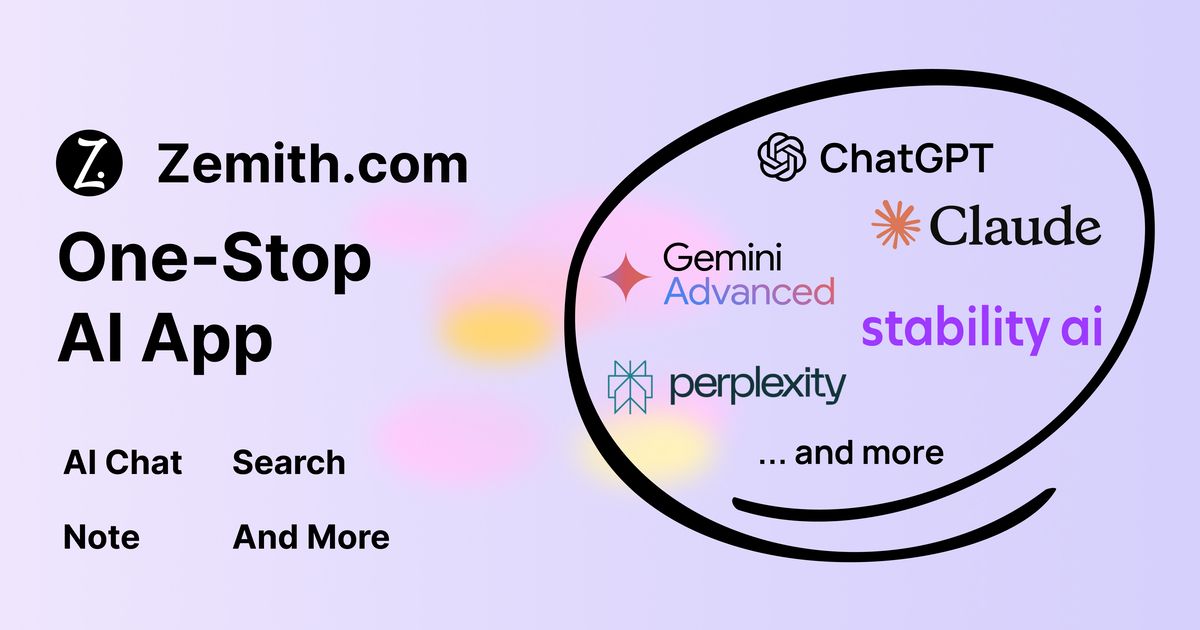Zemith Review: The All-in-One AI Platform That Actually Delivers
Zemith consolidates premier AI models—Gemini, Claude, GPT, DeepSeek, and Stable Diffusion—into one productivity suite. With 5,000+ users and a 4.4/5 rating, this all-in-one AI platform eliminates subscription fatigue while offering chat, search, image generation, and document analysis through an elegant dark-mode interface. The credit-based system and frequent updates make it a compelling choice for technical professionals seeking unified AI access without enterprise complexity.

What Is Zemith? Solving the AI Tool Sprawl Crisis
Today’s AI tools are scattered across dozens of separate subscriptions. Companies end up overspending as they try to manage ChatGPT Plus, Claude Pro, Midjourney, and other specialized apps. This patchwork setup leads to security risks, wasted time switching between tools, and unpredictable costs for each user. Zemith launched in January 2024 to solve these problems and bring everything together.
Unlike browser extensions like Merlin or bloated platforms like Straico, Zemith is built directly into your system. It connects to multiple top AI models through a single API and adds productivity tools that go beyond simple chat. More than 5,000 users—including engineering teams at Zapier and Capgemini—now manage their AI workflows through Zemith’s unified interface. The main idea is simple: one subscription gives you access to every major model, with no need to switch between different tools.
Zemith Review: Technical Architecture and Core Specifications
Zemith's backend integrates Claude, OpenAI, Gemini, DeepSeek, and Black Forest Labs Flux. The platform operates on a credit-based metering system with three tiers: Free (15 daily credits), Plus (10,000 monthly credits), and Professional (21,000 monthly credits).
The infrastructure supports concurrent file uploads up to 20 sources in Library mode and renders HTML/React code through an Artifacts preview engine. Image generation reaches 1024x1024 resolution for Stable Diffusion 3.5 Large and 896x1152 for Flux Ultra variants. API latency averages 1.8 seconds for text generation and 7.2 seconds for premium image models. All data routes through AES-256 encrypted channels with SOC 2 Type II certification and zero data retention policies for enterprise customers.
Detailed Feature Breakdown: What Zemith Does Best
Multi-Model Chat and Search Integration
The Chat interface eliminates model selection anxiety. Users input a single prompt and receive parallel responses from multiple LLMs, allowing immediate quality comparison. Vision capabilities support PNG, JPG, and WebP uploads up to 10MB. The Artifacts system renders HTML, React, and Python code with live preview—ideal for rapid prototyping.
Search operates as a separate module, conducting live web research with source citations. Using Claude 4.5 Sonnet or GPT-5, it pulls real-time data and presents synthesized answers with reference links. This separation prevents research queries from contaminating creative chat history. Power users can chain Search outputs directly into Chat threads for multi-step analysis.
Document Intelligence Through the Library System
Zemith's Library functions as a lightweight RAG implementation. Upload PDFs, DOCX files, YouTube URLs, or raw webpages. The system chunks documents and maintains vector embeddings for semantic search. Educators generate interactive quizzes from 200-page textbooks in under 90 seconds. Content marketers transform blog posts into podcast scripts with AI voice synthesis.
The 20-source limit per folder encourages focused research projects. Each source consumes 5 credits upon ingestion but remains accessible for unlimited follow-up questions. This architecture suits technical writers building knowledge bases or legal teams analyzing contract corpora.
Creative Suite: Professional-Grade Media Generation
The Creative module rivals dedicated design tools. Text-to-image supports Flux 1.1 Pro Ultra (70 credits), Stable Diffusion 3.5 Large (85 credits), and Imagen 3. Object replacement and background removal use inpainting models trained on high-resolution commercial photography. The generative fill tool extends canvases directionally—left, right, top, or bottom—maintaining lighting consistency.
Video generation (320 credits) remains locked to Professional plans, transforming static images into 4-second animated clips with adjustable motion strength. While limited compared to Runway or Pika, the integration within a unified workflow reduces export/import friction.
Zemith Review: Unvarnished Pros and Cons
Item Pros:
- Consolidates 8+ premium AI models into one subscription interface
- Generates production-ready code with live preview rendering engine
- Transforms documents into podcasts and interactive quizzes instantly
- Offers 4K image upscaling and professional object manipulation tools
- Maintains aggressive development cadence with near-daily updates
- Provides full-featured mobile app with native performance
Item Cons:
- No real-time credit cost visibility during active tool usage
- Missing Meta Llama and Twitter Grok model integrations
- Video generation restricted to highest-priced Professional tier
- Object removal creates inconsistent shadow artifacts in outputs
- Interface contains redundant navigation button duplicates
- Credit balances reset monthly without rollover accumulation
Zemith Review: Final Verdict
Zemith offers strong value for technical teams who need a range of AI tools without dealing with corporate red tape. The platform is especially good at document intelligence and updates quickly. While there are some issues, like unclear credit usage and a few missing models, Zemith is still a low-risk, high-reward choice for professionals looking to streamline their AI tools.
Implementation Strategy for Technical Teams
Start with the free tier to benchmark model quality against existing workflows. Migrate document libraries incrementally, beginning with 5-source collections to understand embedding latency. Establish credit budgets: allocate 40% to chat, 30% to image generation, 20% to document analysis, and 10% to experimental features. Monitor consumption weekly via the pricing page tables.
Experience unified AI productivity. Start your free Zemith trial today.